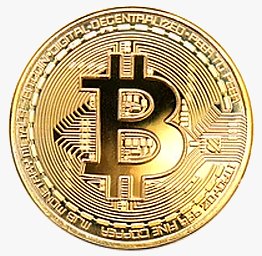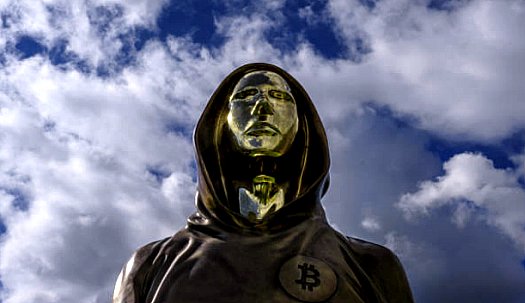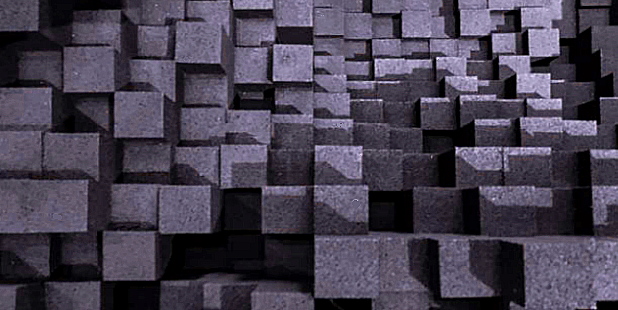Accredited InvestorsAltcoinAnatoli UnitskyAnti-Money Laundering (AML) In CryptoAPIArbitrageArtCoin TokenArticle DirectoryASICAuction Terminology GlossaryBasics of Stock Market InvestingBear MarketBest Crypto Payment Provider In the WorldBitcoinBlockchainBlockchain ConfirmationBlockchain Consensus MechanismBlockchain ForkBlockchain GlossaryBored Ape Yacht ClubBuild a Business That OutperformsBull MarketBuying SkyWay SharesByzantine Fault Tolerance (BFT) ExplainedCasascius CoinCentral Bank Digital Currency (CBDC)Centralized Crypto ExchangeCoinCoinsetCold WalletCollateralCommodity Futures Trading Commission (CFTC)Cross-Chain TechnologyCRUCrypto ExchangeCrypto GlossaryCrypto JokesCrypto Terms to KnowCrypto TickerCryptocurrencyCryptographyCryptojackingCryptounit BlockchainCryptounit GlossaryCryptounit ProgramdApp (Decentralized Application)Dead CoinDecentralized Exchange (DEX)Decentralized Finance (DeFi)Difference Between Bitcoin and EthereumDifferent Ways of Investing MoneyDigital CurrencyDistributed LedgerDo Your Own Research (DYOR)Dollar Cost Averaging (DCA)Dow Jones Industrial Average (DJIA)EncryptionERC-20ERC-721EthereumEvoScentFear Of Missing Out (FOMO)Fear, Uncertainty and Doubt (FUD)Fiat MoneyFNT Fintech CompanyGenesis BlockGlobal Unit PayGlossary of Banking TermsGlossary of Business TermsGlossary of Financial TermsHalvingHODLHot WalletHow Do I Start InvestingHow Rich is Satoshi Nakamoto?How to Create a BlockchainHow to Find Private InvestorsHow to Get Into FintechHow to Program Smart ContractsI Am Thrilled to Be a Part of This Global ProjectInitial Coin Offering (ICO)Initial Public Offering (IPO)Initial Token Offering (ITO)Innovation Basalt TechnologyInnovative Transportation TechnologiesInternational Bank Account Number (IBAN)Investing in Gold Mining StocksInvesting in Gold MiningJagerJoy of Missing Out (JOMO)Know Your Customer (KYC)LedgerLiquidity in CryptocurrencyMaker and Taker Fees in Crypto TradingMarket Capitalization (Market Cap)Meme CoinMetal Credit CardMetaMaskMillenials Now Have Access to Generational WealthMy Best Investment EverNew Digital EvolutionNFT GlossaryOff-Chain TransactionsOn-Chain TransactionsOpen Edition NFTPeer-to-Peer (P2P)Personal Loan GlossaryProbably the Best STO on the MarketProof of Stake (PoS)Real Estate Glossary of TermsReal Estate Investing GlossaryRebase TokenSecurities and Exchange Commission (SEC)Security Token ExchangesSecurity Token Offering (STO)Soulbound Decentralized Identities for Security TokensSoulbound ID Launch by Stobox Proves a SuccessSoulbound TokensStoboxStock Market GlossaryTestimonialsTether Platform and Token (USDT)UnitEx ExchangeUnitsky String TechnologiesUNTBUSDUValidatorWe Started Investing When We Were 25What are Blue Chip NFT?What are Blue Chip Stocks?What are Crypto Assets?What are Crypto Smart Contracts?What are CryptoPunks NFT?What are Digital Assets?What are Digital Collectibles?What are Gas Fees?What are Gas Wars?What are Hashmasks?What are Non Fungible Tokens?What are Non-Sufficient Funds (NSF)?What are Soulbound Tokens (SBT)?What are Stablecoins in Crypto?What are Transactions Per Second (TPS)?What are Utility NFTs?What are Utility Tokens?What Does Burning Crypto Mean?What Does Diamond Hands Mean?What Does Paper Hands Mean?What Does To The Moon Mean?What Does WAGMI Mean?What Happened to Satoshi Nakamoto?What is a 51% Attack?What is a Baby Boomer?What is a Backlink?What is a Banner?What is a Barcode?What is a Bid-Ask Spread in Crypto?What is a Block in Blockchain?What is a Block Reward?What is a Blockchain Address?What is a Blockchain Node?What is a Blockchain Oracle?What is a Blog?What is a Bond?What is a Bot?What is a Broker?What is a Business Accelerator?What is a Cash Cow?What is a Commercial Bank?What is a Commodity?What is a Con?What is a Credit?What is a Credit Limit?What is a Credit Rating?What is a Crypto Airdrop?What is a Crypto Bridge?What is a Crypto Scam?What is a Crypto Token?What is a Crypto Wallet?What is a Crypto Whale?What is a Crypto Winter?What is a Cryptocurrency Public Ledger?What is a Cryptocurrency Roadmap?What is a DAO?What is a Dark Pool?What is a Day Trader?What is a Dead Cat Bounce?What is a Default?What is a Derivative?What is a Digital Credit Card?What is a Fiscal Quarter?What is a Fungible Token?What is a Governance Token?What is a Grace Period?What is a Hard Fork?What is a Hot Wallet?What is a Hybrid Blockchain?What is a Hybrid PoW/PoS?What is a Joint Account?What is a Market Cap?What is a Merkle Tree in Blockchain?What is a Mining Farm?What is a Nonce? What is a PFP NFT?What is a POS System?What is a Prepaid Card?What is a Private Blockchain?What is a Private Key?What is a Public Blockchain?What is a Public Key?What is a Reserve Currency?What is a Ring Signature?What is a Routing Number?What is a Rug Pull in Crypto?What is a Safe Deposit Box?What is a Satoshi?What is a Security Token?What is a Seed Phrase?What is a Shitcoin?What is a Sidechain?What is a Soft Fork?What is a Spot Market?What is a State Bank?What is a SWIFT Code?What is a Tax Identification Number (TIN)?What is a Time Deposit?What is a Transaction Account?What is a Variable Interest Rate?What is a Virtual Assistant (VA)?What is a Virtual Card?What is a Virtual Currency?What is a Visa Card?What is a Whitelist in Crypto?What is a Whitepaper?What is Accounts Payable (AP)?What is AMA in Crypto?What is Amortization?What is an Accrual?What is an ACH Transfer?What is an Actuary?What is an Addendum?What is an Algorithm?What is an Angel Investor?What is an Annuity?What is an Asset?What is an ATM?What is an Atomic Swap?What is an Audit?What is an Avatar?What is an EIN?What is an Embargo?What is an Entrepreneur?What is an IDO (Initial Dex Offering)?What is an Interest Rate?What is an Internet cookie?What is an Investment Bank?What is an NFT Drop?What is an NFT Floor Price?What is an Ommer Block?What is an Orphan Block?What is an Outstanding Check?What is an Overdraft?What is Artificial Intelligence (AI)?What is B2B (Business-to-Business)?What is B2G (Business-to-Government)?What is Bartering?What is Bitcoin Dominance?What is Bitcoin Pizza Day?What is Blockchain Immutability?What is Blockchain Used For?What is BRICS?What is Business-to-Consumer (B2C)?What is C2C (Customer to Customer)?What is Capitalism?What is Catfishing?What is CFD Trading?What is Check Kiting?What is Cloud Mining?What is Communism?What is Content Marketing?What is Decentralization in Blockchain?What is DeFi in Crypto?What is Delisting?What is Depreciation?What is Digital Marketing?What is Diversification?What is Double Spending?What is Dumb Money?What is Dumping?What is Earnings Per Share (EPS)?What is Economics?What is Email Marketing?What is Equity?What is Etherscan?What is Fintech?What is Foreign currency?What is Forex?What is Fundamental Analysis (FA)?What is GameFi?What is Generative Art NFT?What is Gwei?What is Hard Currency?What is Hash Rate?What is Hashing in Blockchain?What is Inflation?What is Initial Game Offering (IGO)?What is Interest?What is Interest Income?What is Mainnet?What is Mastercard?What is Metaverse in Crypto?What is Mining in Cryptocurrency?What is Minting NFT?What is Mobile Banking?What is Money Laundering?What is NFT Alpha?What is NFT Metadata?What is NFT Rarity?What is NGMI Meaning?What is Nominal Interest Rate?What is Online Banking?What is Open-End Credit?What is OpenSea NFT Marketplace?What is Personal Identification Number (PIN)?What is Play-to-Earn?What is Polygon?What is Proof of Authority (PoA)?What is Proof of Work (PoW)?What is Public Key Cryptography?What is Pump and Dump?What is Quantum Computing?What is Refinancing?What is Retail Banking?What is Ripple?What is Sharding?What is Slippage in Crypto?What is Smart Money?What is Solvency?What is Soulbound ID?What is SSL?What is Staking in Cryptocurrency?What is Technical Analysis (TA)?What is Testnet?What is the Ask Price?What is the Better Business Bureau (BBB)?What is the Bid Price?What is the Dark Web?What is the InterPlanetary File System (IPFS)?What is the Gold Standard?What is the Lightning Network?What is the Prime Rate?What is the Sandbox?What is the Secondary Market?What is the World Bank?What is Tier 1 Capital?What is Tokenomics?What is TRC-20?What is Universal Banking?What is Unspent Transaction Output (UTXO)?What is Usury?What is Volatility in Crypto?What is Wash Trading?What is Web3?What is Whisper?What is XRP?What is Zero-Knowledge Proof (ZKP)?Who is Beeple?Who is Satoshi Nakamoto?Who is Vitalik Buterin?Why Tokenization is a Safe HavenWhy You Should Try Your Hand at Trading
What is the Genesis Block?
- Home
- Blockchain Glossary
- What is the Genesis Block?
Satoshi Nakamoto ensured the success of the initial launch of the Bitcoin network in 2009 by hardcoding the "Genesis block" in the software. This was crucial in establishing a shared history of the blockchain among all nodes joining the network.

Ordinarily, blocks in the Bitcoin network are mined by nodes, but having a single source of truth for the starting point of the blockchain was important, even for the first node to join the network. Hardcoding the Genesis block into the Bitcoin code provided a guarantee that all nodes would start from the same starting point when joining the network.
What is the Genesis Block?
The genesis block is the first block recorded on its respective blockchain network.
The genesis block provides the foundation for the subsequent blocks that are added to form a chain. That is where the term "blockchain" comes from. Every block in a blockchain will contain a reference to the previous block. That is not the case with a genesis block because there is no block preceding it in the chain.
Prior to the genesis block, nothing was added to the blockchain. So, technically, the "prior hash" value of a genesis block is set to 0. All subsequent blocks, on the other hand, will have a "prior hash" preset to whatever was specified as the preceding block's hash. Because there is no preceding block to refer to, genesis blocks are generally hardcoded into the software.
Each block following the genesis block will contain information on the transactions that occurred in that block as well as a hash from the block before it. If just one transaction is modified, the entire chain is corrupted.
The genesis block of Bitcoin was created on January 3rd, 2009. This block had a reward of 50 BTC (Bitcoin) that was never spent. The mysterious creator of the blockchain, Satoshi Nakamoto, has not given any explanation, so it is not known if this was intentional or a bug. The genesis block reward of 50 BTC was sent to the address 1A1zP1eP5QGefi2DMPTfTL5SLmv7DivfNa, and those who sent bitcoins to this address will never be able to recoup their funds.
Block rewards are paid to miners in exchange for their work in mining, or validating transactions that comprise new blocks. With potentially hundreds of thousands of transactions taking place every day, it is critical that transactions are verified as soon as possible.
One intriguing aspect of Bitcoin's Genesis Block is that it carries a hidden message: “The Times 03/Jan/2009 Chancellor on brink of second bailout for banks”. The data is a reference to a news piece from The Times.
The article headline demonstrates that the Genesis Block could not have been created prior to the publication of the article headline. It is believed that Satoshi included the headline to support his cause for inventing Bitcoin - allowing anybody, anywhere in the world, to control their own money without the involvement of any government or institution.
The Bitcoin network constantly checks and double-checks itself through complicated mathematical puzzles addressed first by machines, then by human bitcoin miners. There can be no bitcoin trades until the math challenge is solved. Another safeguard is that because all transactions are saved indefinitely, miners' actions can always be traced, making it impossible to hide any wrongdoing.
Some Bitcoin enthusiasts regard the Genesis Block with cult-like respect. Bitcoin's complicated construct and peculiar lexicon entice fans with the zeal of a sophisticated arcade game. As a tribute to Satoshi Nakamoto, Bitcoin fans have begun giving tiny amounts of BTC to the Genesis Block. This is regarded as a form of sacrifice because once a coin is placed in the Genesis Block, it cannot be moved again.
Decoding the Genesis block
The Genesis block is a critical component of the Bitcoin network and is considered a key piece of the puzzle to understanding the underlying technology. To get a better grasp on what the Genesis block is, we must examine it within the context of the original Satoshi client.
The hash of the Genesis block can be found in the main.cpp file of the repository, and the client software performs a check to see if this block has been recorded in the node's block database. The block contains a coinbase transaction that pays out 50 Bitcoins to the address 1A1zP1eP5QGefi2DMPTfTL5SLmv7DivfNa, although it is important to note that it is coded as a Pay to Public Key (P2PK) transaction. All relevant information about the Genesis block can be found in the commented code, starting on line 1439 of the main.cpp file.
The client software maintains two databases - one for blocks and one for transactions. The Genesis block is included in the block database, but the coinbase transaction is excluded from the transaction database. This means that any attempt to spend the coins from the Genesis block would fail as the transaction does not exist in the client's transaction database. The coins are locked with a Pay to Public Key (P2PK) output script, which means they can only be unlocked with a valid signature using the private key.
It's worth mentioning that while the original code excluded the Genesis coinbase transaction from the transaction database, it is technically possible for a node to add it manually through a hard fork. If a node did this and had a valid unlocking script (signature), the Genesis block could be spent on that chain. However, by excluding the coinbase transaction from the transaction database, Satoshi's original intention was for the Genesis block to remain unspent.
The Bottom Line
The Genesis Block is a simple block of data, but it holds a lot of significance in the world of Bitcoin. Its purpose, the mysterious message included in the block header, and the mysterious coinbase transaction have all been subjects of speculation and intrigue over the years. Regardless of the mystery surrounding it, the Genesis Block remains an important part of the history of Bitcoin and a symbol of the decentralized financial system it represents.
Related Articles

Bitcoin
The digital currency known as Bitcoin is operated through a distributed computer network. However, in a larger sense, the term "Bitcoin" is frequently used to refer to a number of other concepts.

Who is Satoshi Nakamoto?
The name Satoshi Nakamoto is believed to be a reference to the Japanese term for "intelligent," "clever," or "wise," and it is possible that the pseudonym was chosen to...

What is a Blockchain Address?
This identifier, known as a blockchain address, has become an essential part of the digital revolution and is revolutionizing the way we interact with the world of cryptocurrency.

What is a Block in Blockchain?
A block stores important information about the transactions and does not take up a significant amount...
- Home
- Blockchain Glossary
- What is the Genesis Block?